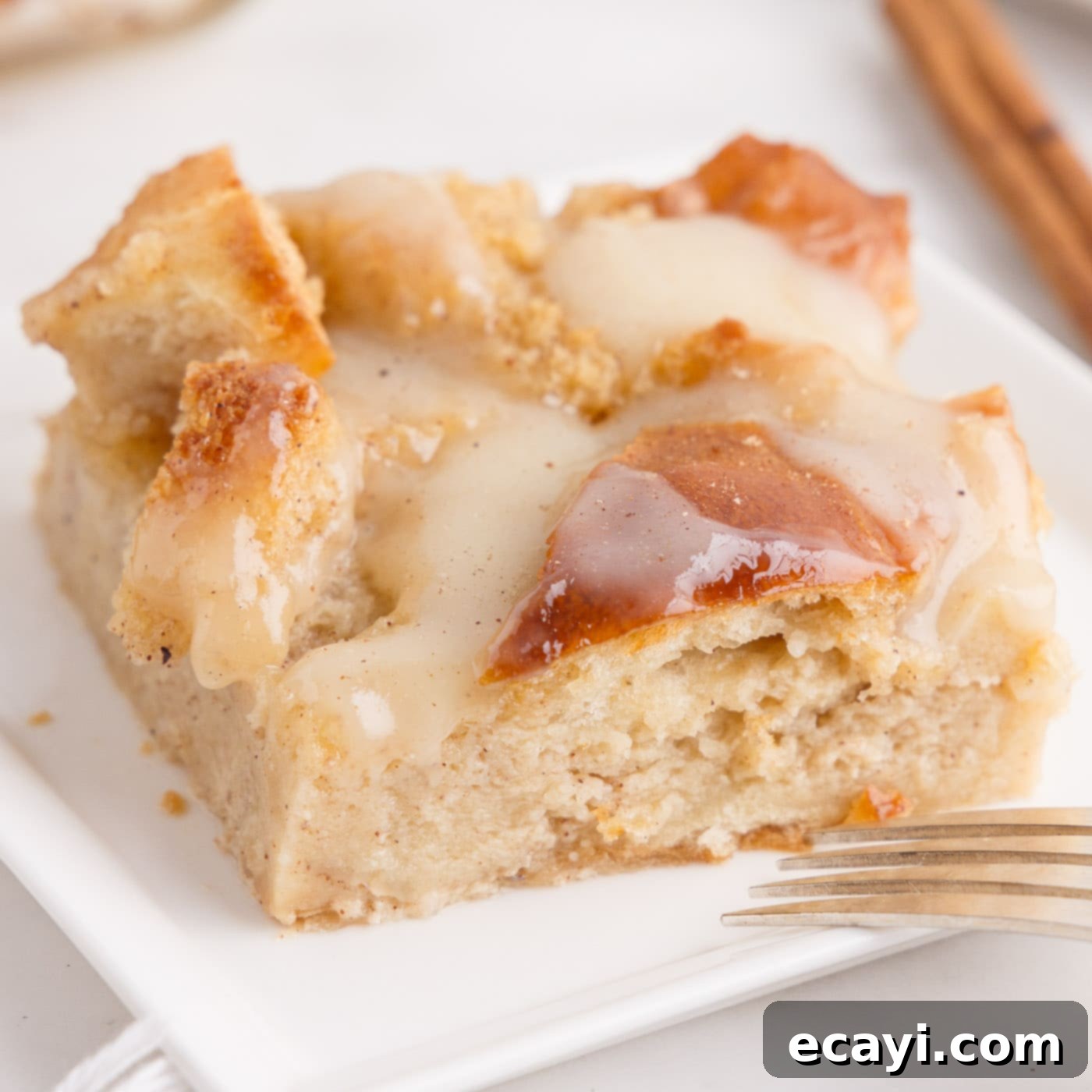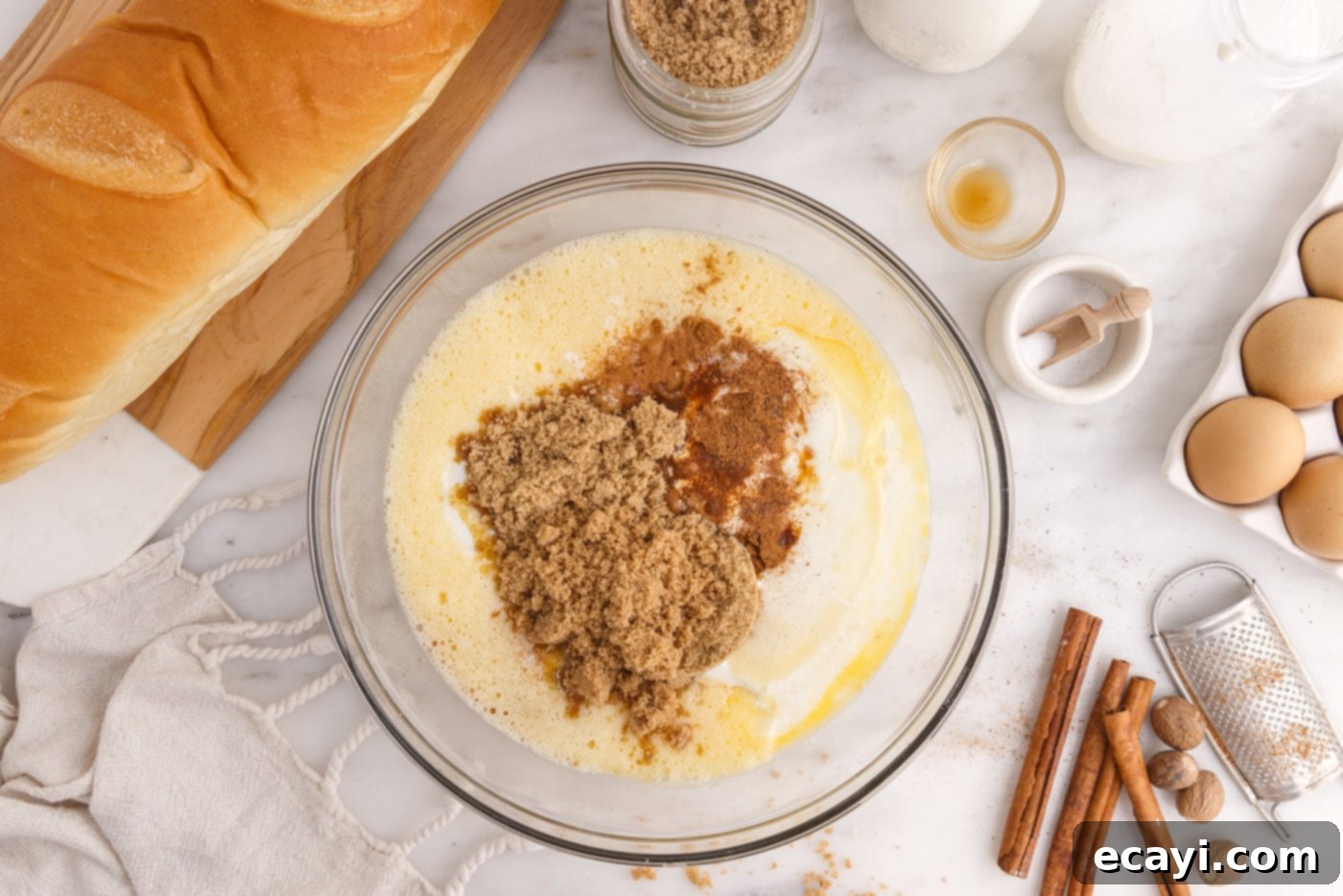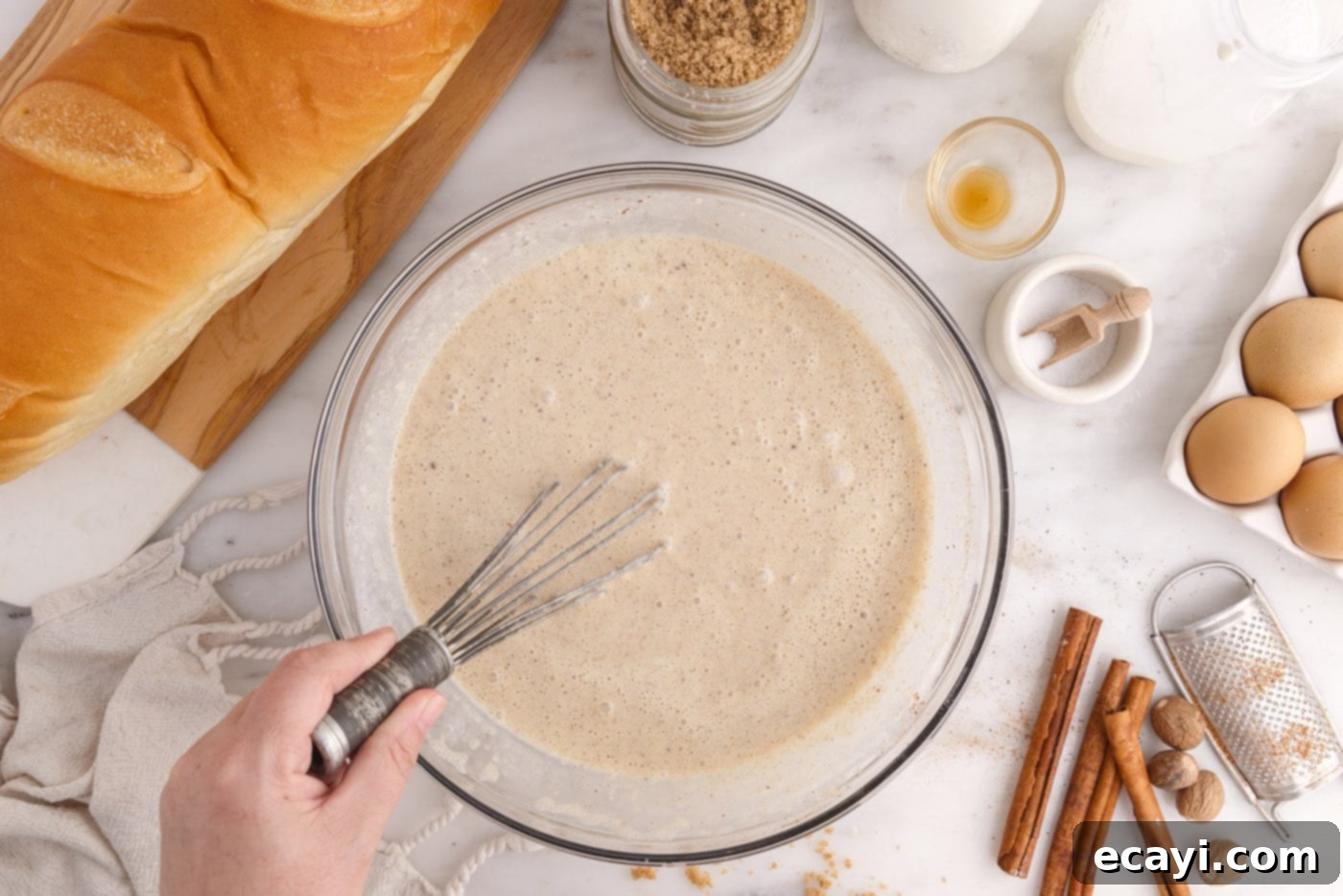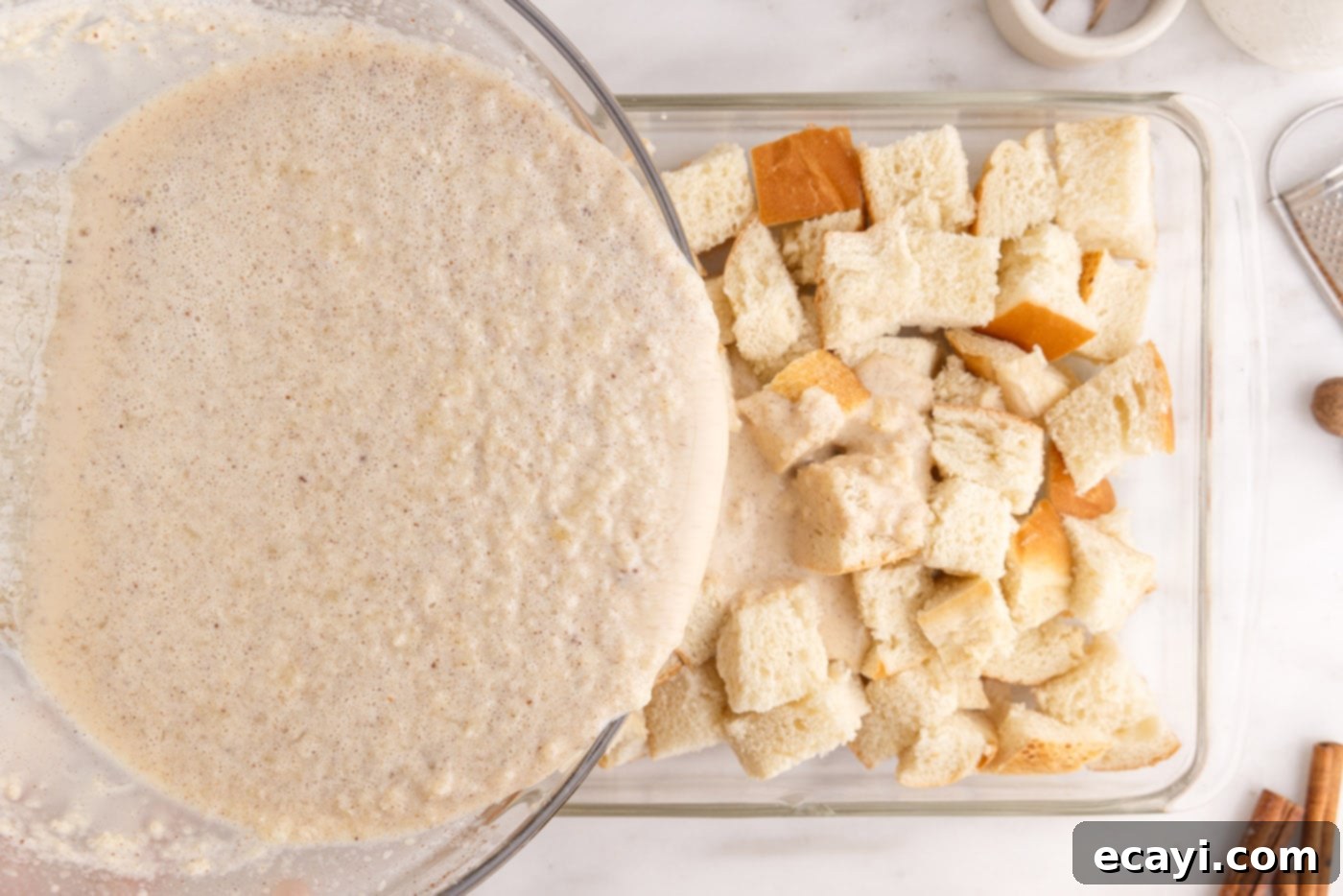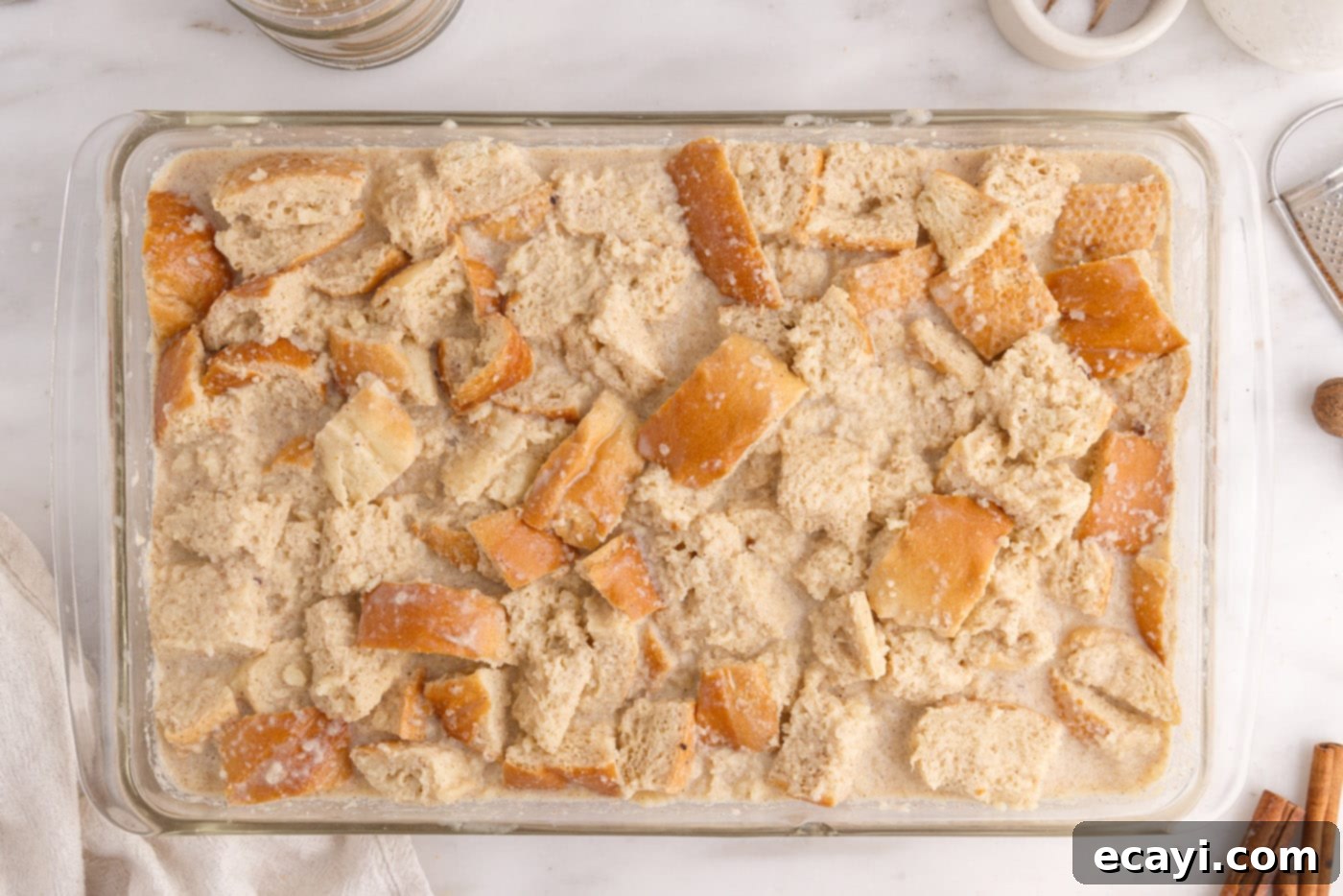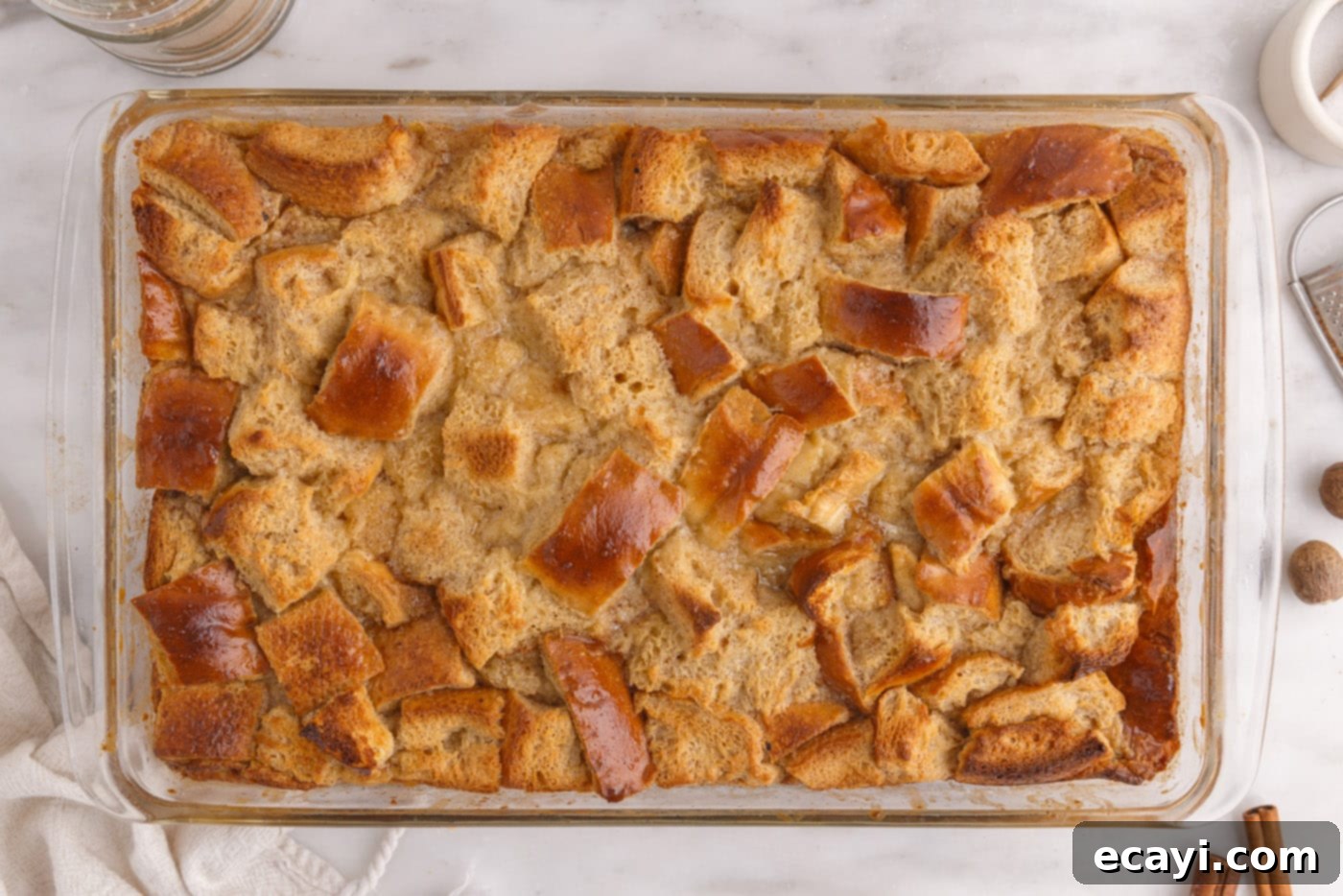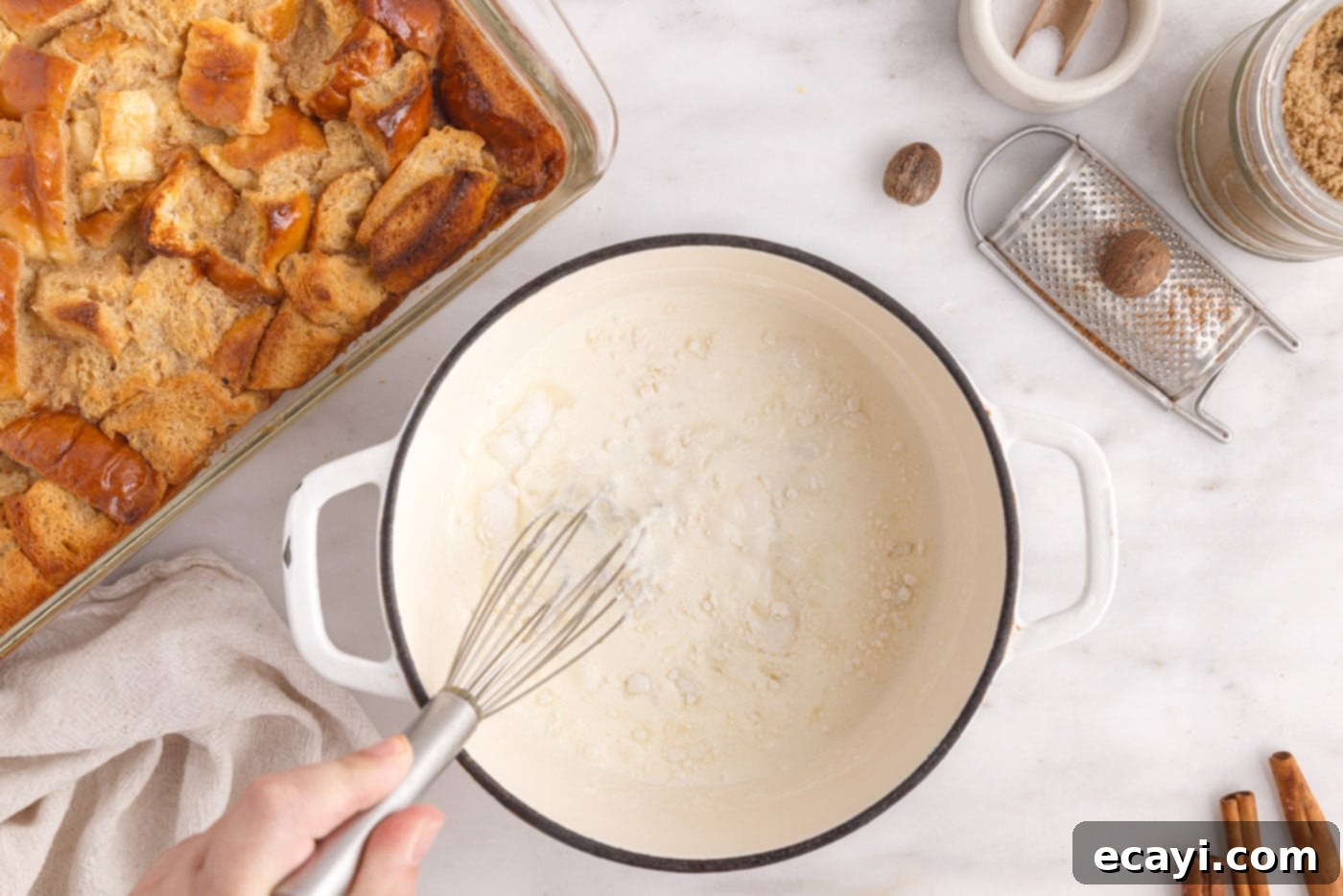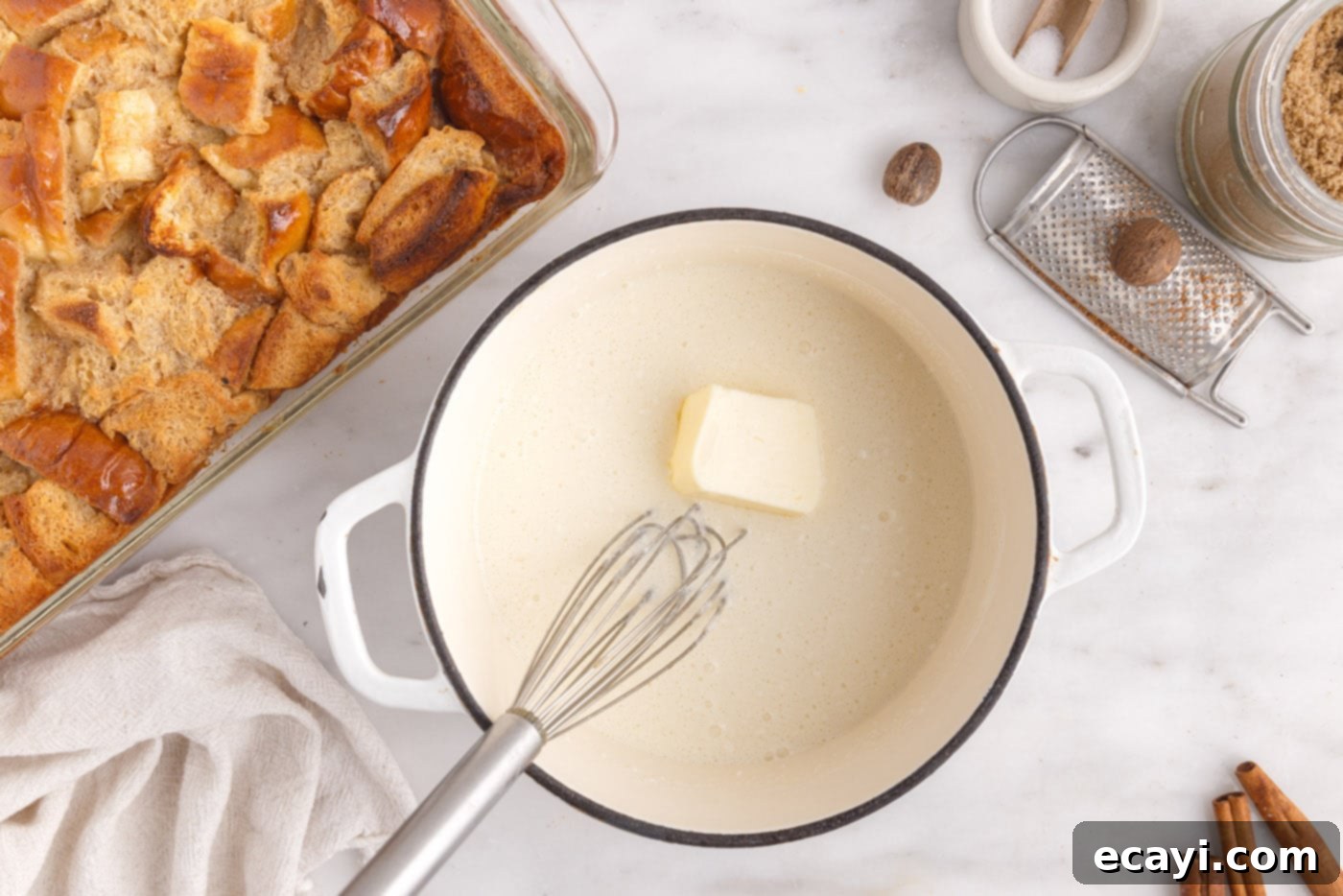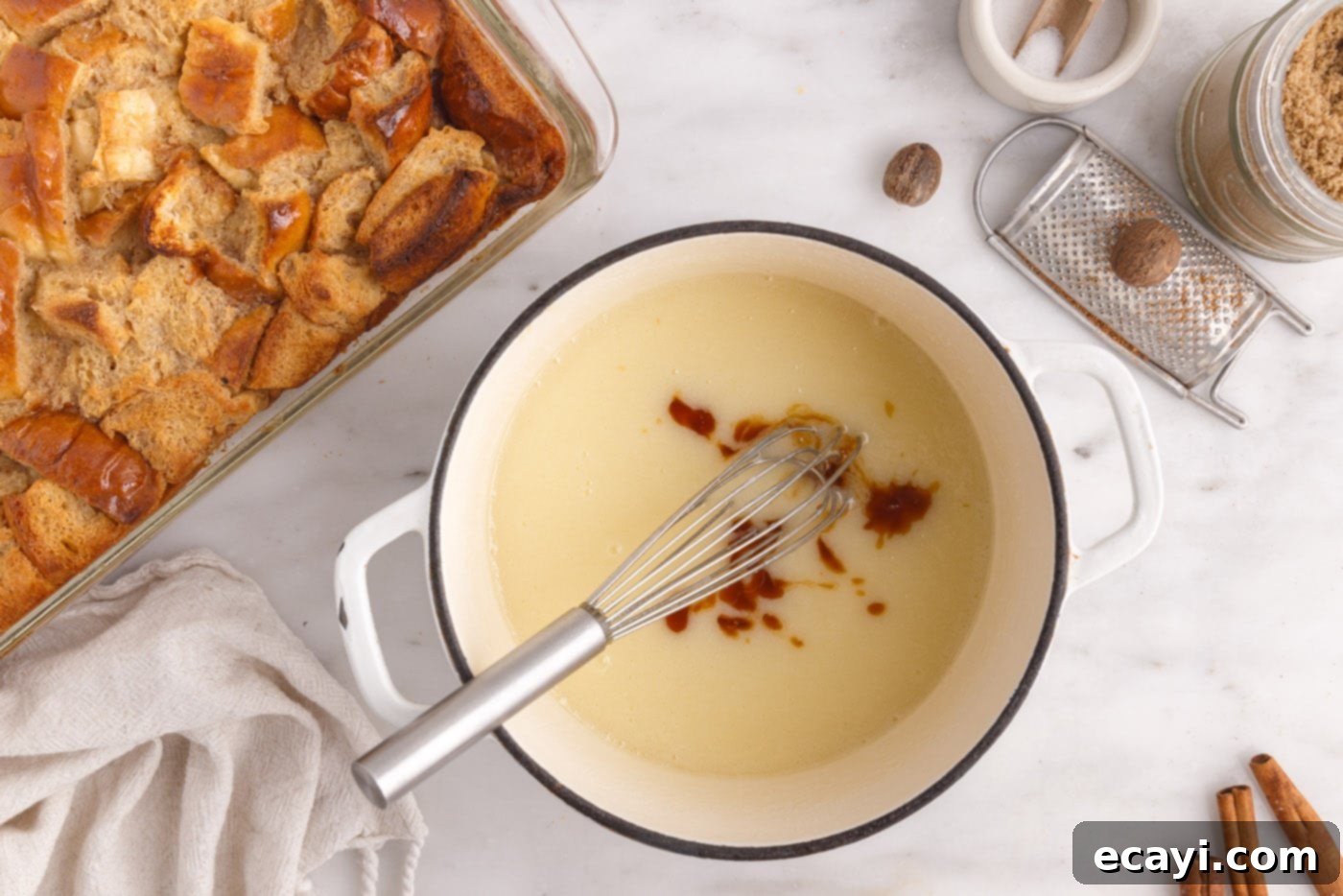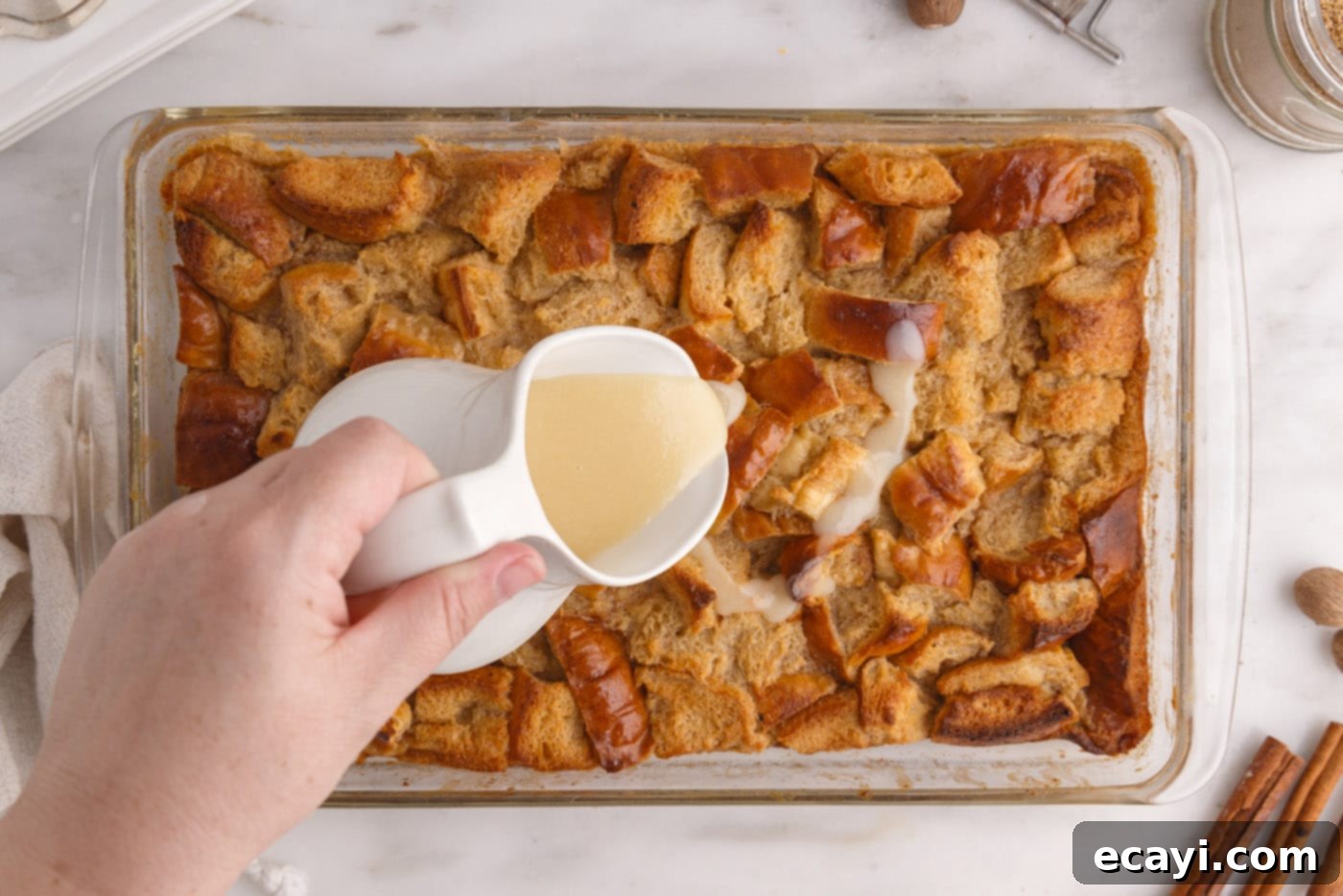Comforting Classic Bread Pudding with Sweet Vanilla Drizzle: The Ultimate Homemade Recipe
There’s a special kind of warmth that only a truly comforting dessert can bring, and this homemade bread pudding recipe with its luscious, sweet vanilla drizzle delivers exactly that. Imagine soft, spice-soaked bread baked to golden perfection, then generously topped with a rich vanilla sauce that melts into every crevice. It’s a delightful treat that transcends meal times, perfect for a cozy breakfast, a delightful brunch, or a satisfying dessert after any meal. This recipe promises an experience that will make you feel all warm and fuzzy inside.
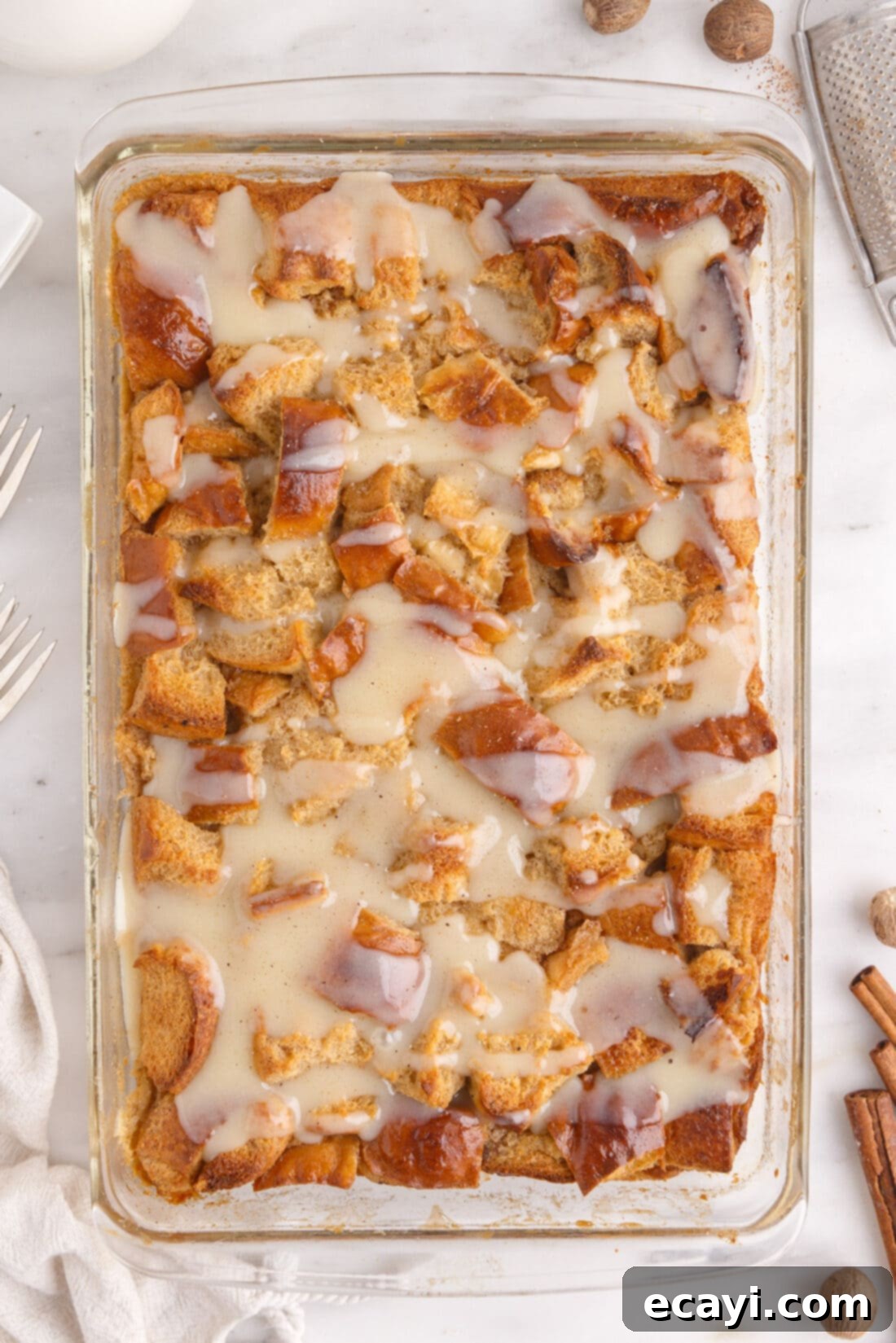
Why This Bread Pudding Recipe Is Simply the Best
Despite its name, bread pudding isn’t a “pudding” in the modern sense. It’s a classic dessert that ingeniously transforms humble, stale bread into something truly extraordinary. This particular recipe stands out for several reasons, marrying traditional techniques with exceptional flavor. It combines simple, wholesome ingredients like stale bread, fragrant warm spices, eggs, rich butter, and tangy buttermilk, culminating in a dish that’s both economical and incredibly satisfying. The secret lies in the harmonious blend of flavors and textures, elevated by a dreamy vanilla sauce that ties everything together beautifully.
The heart of this bread pudding is its incredibly flavorful custard, which features the traditional warming notes of cinnamon and nutmeg. But it’s the addition of buttermilk that truly makes a difference, imparting a subtle tang and an incredibly tender, moist texture that ordinary milk simply can’t achieve. This creamy, spice-infused custard perfectly soaks into every piece of bread, creating a pudding that’s soft, rich, and utterly melt-in-your-mouth. It’s a culinary hug in a bowl, reminiscent of simpler times and cherished family gatherings.
Beyond the bread pudding itself, the accompanying sweet vanilla sauce is a game-changer. While similar to a buttermilk syrup, its thicker consistency means it clings to each spoonful, delivering a concentrated burst of vanilla sweetness that perfectly balances the spiced bread. This sauce isn’t just an afterthought; it’s an integral component that enhances every bite, making this bread pudding a truly decadent experience. This recipe also provides a fantastic base for customization. Feel free to stir in about a cup of your favorite dried fruits like raisins, cranberries, or chopped apricots, or add a delightful crunch with nuts such as pecans or walnuts. Whether it’s a special holiday morning, perhaps alternating with a savory ham and cheese breakfast casserole, or just a cozy weekend brunch, this comforting recipe is guaranteed to fill your home with wonderful aromas and your belly with warmth and happiness.
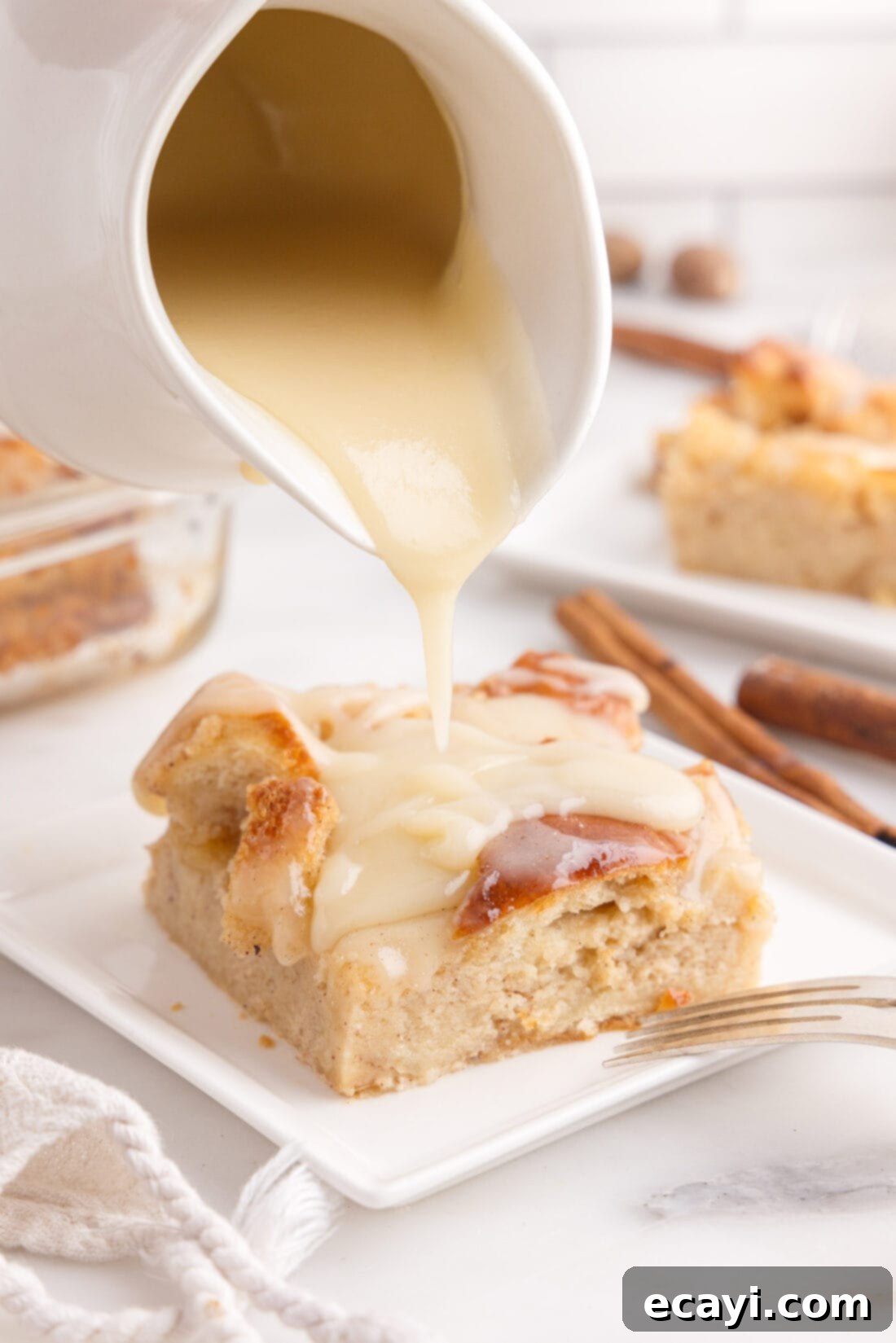
Key Ingredients for Your Homemade Bread Pudding
Crafting the perfect bread pudding begins with gathering the right ingredients. For exact measurements and a complete, printable list of everything you’ll need, please refer to the recipe card located at the end of this post. Rest assured, the components for both the luscious bread pudding and its signature vanilla sauce are readily available and simple to work with.
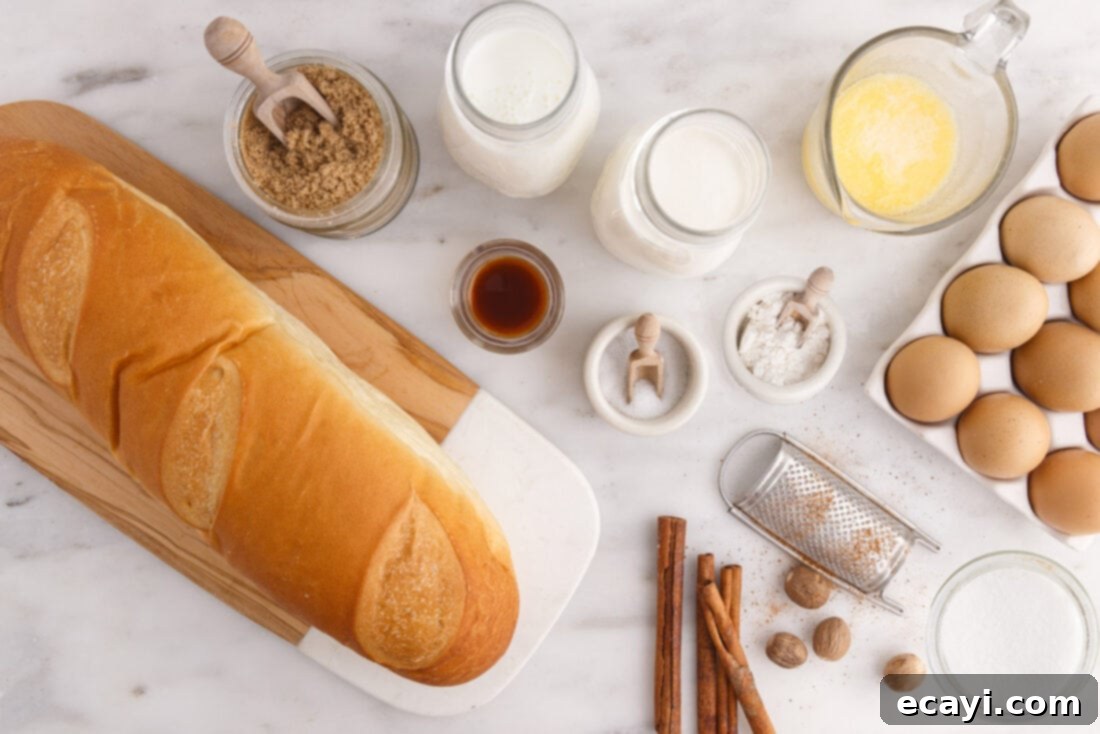
Ingredient Spotlight & Smart Swaps
Understanding each ingredient’s role and knowing what substitutions are possible can empower you to make this bread pudding truly your own, even when your pantry isn’t fully stocked.
BREAD: The Foundation of Flavor and Texture
For this recipe, we opted for traditional French bread, which offers a great structure and a neutral flavor that allows the spices and custard to shine. However, the beauty of bread pudding is its versatility. You can experiment with other types of bread to achieve different flavor profiles and textures. Sourdough bread introduces a delightful subtle tang, challah or brioche will yield an incredibly rich and tender pudding, and even a fruit-filled bread like raisin bread can add an extra layer of sweetness and texture. The key is to use stale bread. Stale or dried-out bread is crucial because its drier texture acts like a sponge, readily soaking up the rich cream mixture. This absorption is what gives bread pudding its characteristic soft, custardy interior and ensures maximum flavor in every bite. If you only have fresh bread on hand, don’t worry! Simply cube it into 1-inch pieces and spread them evenly on a baking sheet. Pop it into a 350°F (175°C) oven for about 10-15 minutes, tossing occasionally, until the bread feels dry and slightly crispy but not toasted. This quick drying process will prepare it perfectly for soaking up all that delicious custard.
CREAM & DAIRY: For Richness and Tenderness
Our recipe calls for a combination of heavy cream and buttermilk, which creates a wonderfully rich and tangy custard. Buttermilk is particularly prized for its ability to tenderize baked goods and add a unique depth of flavor that complements the spices beautifully. If buttermilk isn’t available, you can substitute it with whole milk, though the final product might be slightly less tangy and tender. For the butter, we recommend unsalted butter, as it gives you control over the overall saltiness of the dish. If you only have salted butter, simply omit the additional salt listed in the recipe to maintain a balanced flavor profile.
SPICES: Aromatic Warmth
Cinnamon and nutmeg are the classic spice duo for bread pudding, providing that comforting, aromatic warmth we all love. For an extra layer of complexity, consider adding a pinch of ground cloves, allspice, or even a touch of cardamom. Always use fresh, good-quality spices for the best flavor.
SAUCE: The Irresistible Drizzle
The sweet vanilla sauce is a star in its own right, offering a creamy, thick finish that’s utterly delicious. While vanilla is a timeless choice, feel free to get creative with other sauce options. A rich caramel sauce makes for an indulgent alternative, or perhaps a bourbon cream sauce for an adult twist. A bright lemon sauce or a simple fruit compote could also offer a delightful contrast to the richness of the pudding. Both ways are undeniably delicious!
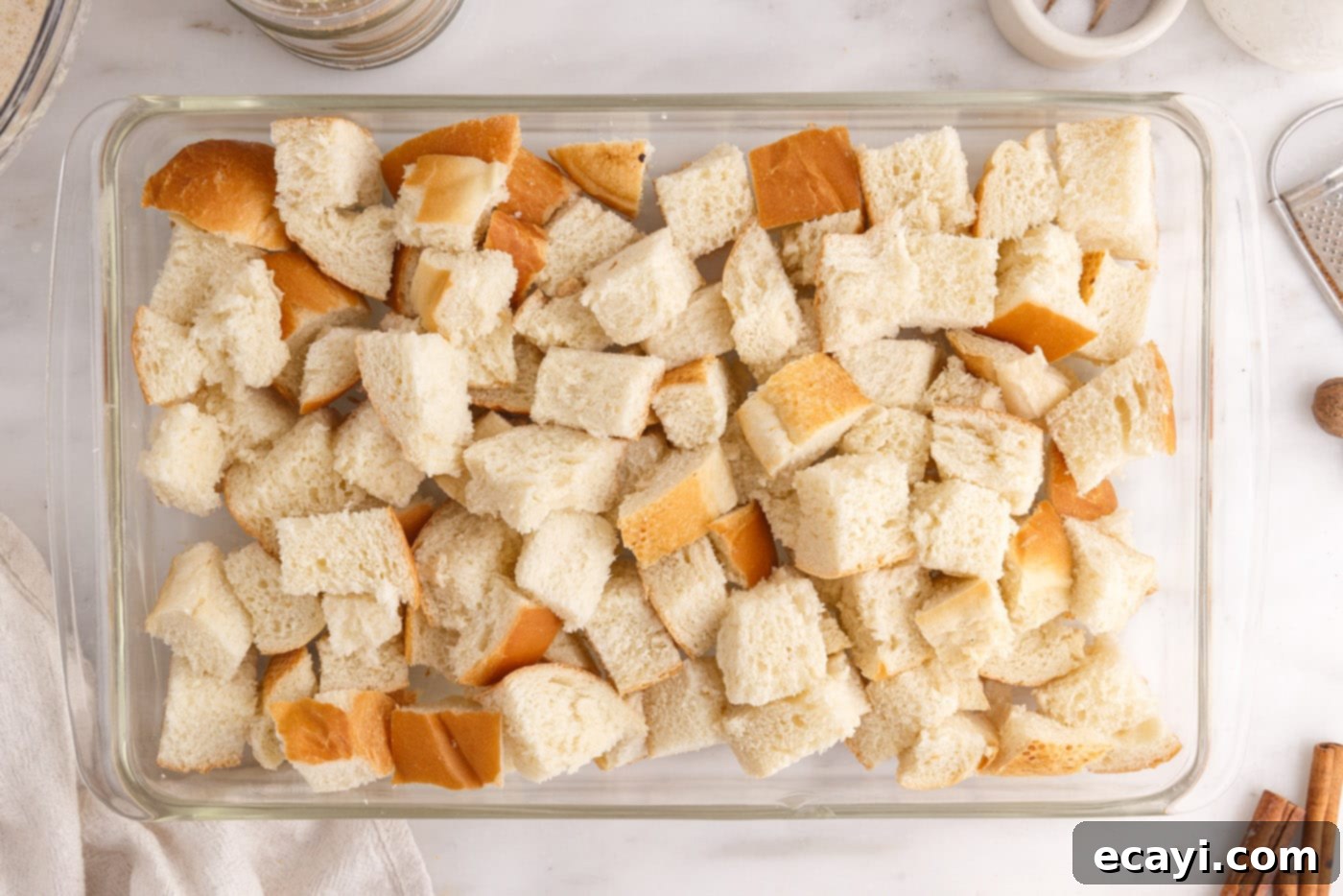
Step-by-Step Guide to Crafting Perfect Bread Pudding
These step-by-step photos and instructions are here to help you visualize how to make this recipe successfully. For a comprehensive, printable version of this recipe, complete with precise measurements and instructions, you can easily Jump to Recipe at the bottom of this page.
- **Prepare Your Baking Dish and Oven:** Begin by preheating your oven to 350°F (175°C). While the oven heats, generously grease a 9×13-inch glass baking dish. This step is crucial to prevent sticking and ensure your bread pudding comes out easily. Set the greased dish aside.
- **Whisk the Custard Base:** In a large mixing bowl, crack the eggs and whisk them vigorously until they become frothy and light. This aeration helps create a tender custard. Next, add the heavy cream, melted butter, buttermilk, cinnamon, nutmeg, vanilla extract, salt, and dark brown sugar. Whisk all these ingredients together until they are well combined. Don’t worry if the mixture appears slightly lumpy; this is normal due to the brown sugar. Ensure the sugar is dissolved as much as possible for a smooth, sweet custard.


- **Prepare the Bread:** Slice your French bread into approximately 1-inch cubes. Uniform cubes are best for even soaking and baking. Spread these bread cubes evenly across the bottom of your prepared baking dish.
**EXPERT TIP:** The success of bread pudding largely depends on the bread’s ability to absorb the custard. If your bread isn’t stale, cube it and arrange it on a baking sheet. Bake at 350°F (175°C) for 10-15 minutes until it’s dried out but not significantly browned or toasted. This step removes moisture, making the bread more absorbent.
- **Combine Bread and Custard:** Carefully pour the whisked cream mixture over the bread cubes in the baking dish. Gently stir the bread and custard together, ensuring that all the bread pieces are coated and evenly distributed throughout the mixture. Avoid mashing the bread; a gentle folding motion works best.

- **Allow for Soaking:** This step is crucial for achieving that wonderfully soft, custardy texture. Let the dish sit undisturbed for 10-15 minutes at room temperature. During this time, the bread will effectively absorb the flavorful cream mixture, transforming from dry cubes to plump, moist morsels ready for baking.

- **Bake to Golden Perfection:** Transfer the baking dish to your preheated oven and bake for approximately 1 hour. The bread pudding is ready when its top is beautifully golden brown, and no liquid wetness is visible seeping up from the top layer. To check for doneness, gently press the center; it should feel set and bounce back slightly. If a knife inserted into the center comes out clean, it’s perfectly baked.

- **Prepare the Irresistible Vanilla Sauce:** While your bread pudding is baking, it’s the perfect time to whip up the decadent vanilla sauce.
- **Cook the Sauce Ingredients:** In a medium saucepan, combine 1 cup of heavy cream, granulated sugar, and all-purpose flour. Whisk these ingredients together until smooth. Add the butter to the mixture. Place the saucepan over medium heat, whisking continuously, until the butter melts completely and the mixture begins to simmer and thicken. The flour acts as a thickener, creating a beautifully smooth sauce.


- **Finish the Sauce with Vanilla:** Once thickened, remove the saucepan from the heat. Whisk in 1 teaspoon of vanilla extract. The heat from the sauce will infuse the vanilla flavor beautifully. Set the sauce aside to cool slightly while the bread pudding finishes baking. It will thicken further as it cools.

- **Serve Warm:** Once the bread pudding is out of the oven, allow it to cool for a few minutes. Then, generously pour the warm vanilla sauce over the entire bread pudding. Slice into individual portions and serve immediately while it’s still warm and gloriously soft. Enjoy every comforting bite!

Frequently Asked Questions & Expert Tips for Bread Pudding
Absolutely! Preparing bread pudding ahead of time is one of its greatest advantages, especially for entertaining or busy mornings. You can assemble the entire dish, including soaking the bread in the custard mixture, a day in advance. Simply cover the baking dish tightly with plastic wrap and store it in the refrigerator. The longer the bread soaks in the wet ingredients, the more flavor it absorbs and the softer and more custardy the final texture will be. When you’re ready to bake, remove it from the fridge and let it sit at room temperature for about 30 minutes while your oven preheats, then bake as directed.
When properly stored in an airtight container or tightly wrapped with plastic wrap, leftover bread pudding will last in the refrigerator for up to 4 days. To reheat, individual slices can be warmed in the microwave for 30-60 seconds, or until heated through. For larger portions or a whole dish, cover it with foil and reheat in a preheated oven at 300°F (150°C) for 15-20 minutes, or until warm. This method helps prevent it from drying out.
Yes, bread pudding freezes quite well! To freeze, allow the baked bread pudding to cool completely. You can freeze it whole or in individual portions. Wrap tightly with plastic wrap, then an additional layer of aluminum foil to prevent freezer burn. It can be stored in the freezer for up to 2-3 months. To reheat from frozen, thaw in the refrigerator overnight, then reheat in the oven as described above.
A dry bread pudding often results from not enough custard or not allowing sufficient soaking time. Ensure your bread is stale (or dried) so it can fully absorb the liquid. If it’s soggy, it might be due to too much custard relative to the bread, or the bread wasn’t dry enough initially. It could also be underbaked, meaning the custard didn’t fully set. Always look for a golden-brown top and a set center that springs back when lightly pressed.
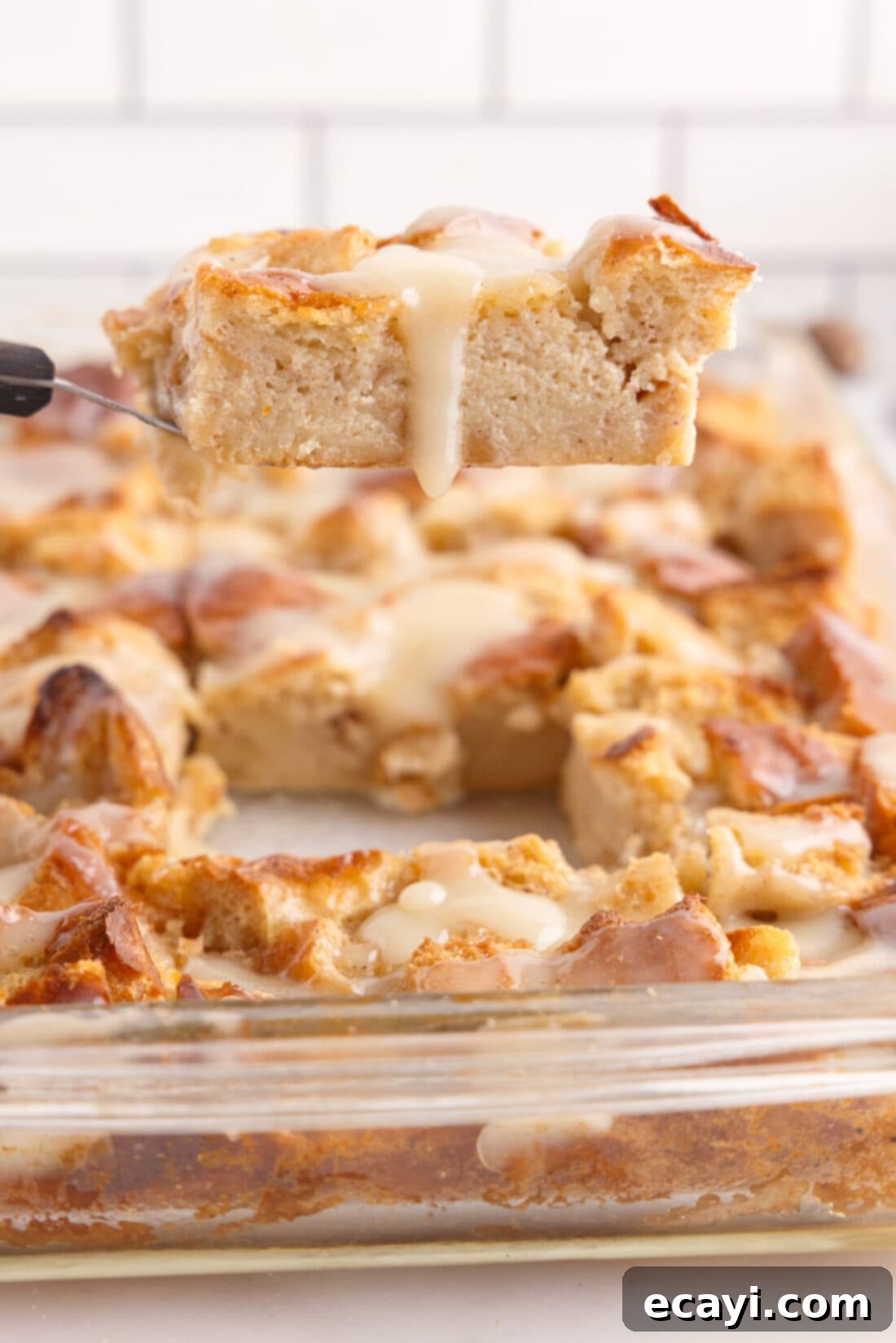
Delightful Ways to Serve Your Bread Pudding
Bread pudding is a wonderfully versatile dish that shines on many occasions. It’s a comforting staple, especially around the holidays, but truly, any day is a good day for a slice of this warm, spice-infused delight. Enjoy it straight from the oven for breakfast, perhaps as a decadent brunch centerpiece, or as a satisfying dessert. Its charm also extends to room temperature or even chilled, making it a flexible treat for various preferences and seasons.
One of its most appealing qualities is how easily it can be prepared ahead of time. Assembling the dish the night before and letting it chill in the refrigerator means all you have to do on Christmas morning, or any busy morning, is pop it into the oven. This convenience is truly a lifesaver when you want a homemade treat without the morning rush.
While the creamy vanilla sauce is a perfect pairing, feel free to explore other delicious topping options to complement your bread pudding. Consider a rich raisin sauce, a decadent caramel sauce, a simple warm maple syrup, or a bright, tangy lemon sauce for a refreshing contrast. For an extra touch of indulgence, serve your warm bread pudding with a scoop of vanilla bean ice cream, a dollop of freshly whipped cream, or a dusting of powdered sugar. A light drizzle of chocolate syrup can also elevate it to a new level of dessert heaven. Pair it with a hot cup of coffee, tea, or a glass of cold milk for a truly satisfying experience.
More Sweet Bread and Cake Recipes to Savor
- Monkey Bread
- Crescent Danish Wreath
- Chocolate Zucchini Bread
- Blueberry Breakfast Cake
- Chocolate Babka
- Cherry Cream Cheese Coffee Cake
I love to bake and cook and share my kitchen experience with all of you! Remembering to come back each day can be tough, that’s why I offer a convenient newsletter every time a new recipe posts. Simply subscribe and start receiving your free daily recipes!
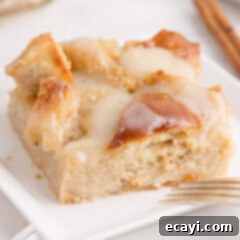
Bread Pudding
IMPORTANT – There are often Frequently Asked Questions within the blog post that you may find helpful. Simply scroll back up to read them!
Print It
Pin It
Rate It
Save ItSaved!
Ingredients
- 4 large eggs
- 1 cup heavy whipping cream
- ¼ cup unsalted butter melted, plus more for greasing the pan
- 2 cups buttermilk or whole milk
- 1 ½ tsp cinnamon
- ½ tsp ground nutmeg
- 1 Tbsp vanilla extract
- ½ tsp salt
- 1 cup dark brown sugar packed
- 16 oz french bread cubed, day old or dried-out in the oven
Vanilla Sauce
- 1 cup heavy whipping cream
- ⅔ cup granulated sugar
- 1 Tbsp all-purpose flour
- 3 Tbsp unsalted butter
- 1 tsp vanilla extract
Things You’ll Need
-
13×9 baking dish
-
Large mixing bowl
-
Whisk
-
Saucepan
Before You Begin
- If you do not have stale bread, cube the bread and place it on a baking sheet. Pop it in the oven at 350F for around 10-15 minutes. You don’t want to crust the bread too much, just remove the moisture from it.
- We used traditional French bread, but sourdough, challah, or even raisin bread would work wonderfully.
Instructions
-
Preheat oven to 350°F. Grease a 9×13” glass baking dish and set aside.
-
Whisk eggs in a large mixing bowl until they are frothy. Add the cream, butter, buttermilk, cinnamon, nutmeg, vanilla extract, salt, and brown sugar. Whisk to combine mixture – it will be slightly lumpy.
-
Slice French bread into 1” cubes and spread evenly into the prepared baking dish.
-
Pour the cream mixture over the bread and stir gently to distribute the ingredients evenly.
-
Leave the dish to sit for 10-15 minutes until the bread has absorbed the cream mixture.
-
Bake for 1 hour until the top of the bread pudding is golden brown and no wetness is visible seeping up through the top layer. The bread pudding should bounce back slightly when pressed.
-
While the bread pudding is cooking, prepare the sauce.
-
In a medium saucepan, whisk together 1 cup heavy cream, granulated sugar, and flour. Add the butter to the mixture and heat over medium until the butter melts completely and the mixture begins to simmer and thicken.
-
Remove from heat and whisk in 1 teaspoon vanilla extract. Set aside to cool.
-
Pour sauce over the bread pudding, slice, and serve warm.
Nutrition
The recipes on this blog are tested with a conventional gas oven and gas stovetop. It’s important to note that some ovens, especially as they age, can cook and bake inconsistently. Using an inexpensive oven thermometer can assure you that your oven is truly heating to the proper temperature. If you use a toaster oven or countertop oven, please keep in mind that they may not distribute heat the same as a conventional full sized oven and you may need to adjust your cooking/baking times. In the case of recipes made with a pressure cooker, air fryer, slow cooker, or other appliance, a link to the appliances we use is listed within each respective recipe. For baking recipes where measurements are given by weight, please note that results may not be the same if cups are used instead, and we can’t guarantee success with that method.
